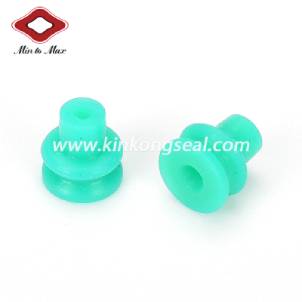Mar. 23, 2020
We all know the advantages of silicone wire seal: resistance to ozone and chemical action, making the product very durable during use and easy to install. Harness single wire sealing feature: It has good heat resistance and weather resistance. Automobile wire seal has the characteristics of high temperature resistance and weather resistance. It can also play a role of shockproof and waterproof in use. This can bring us a more comfortable car driving environment. It can also play a good waterproof role in rainy days without leakage. It can be glued to a variety of smooth surface materials, while the back has its own glue. Silicone is more convenient to use, it will not fall off even under high temperature environment, and its environmental protection is very good. It also has good resistance to aging. The elasticity and pressure resistance of automotive seals are very good.

Automobile Wire Seal
But do you know the hardness measurement tools of silicone products? Silicone single wire seal manufacturer introduces you:
Hardness measurement and tools:
The most commonly used instrument for measuring rubber hardness is called a Shore (also called Shore) hardness tester. Use a spring to press a metal indenter into the surface of the material and measure how deep it can penetrate. The instrument measures penetration depths from zero to 0.100 inches. A zero reading on the ruler means that the indenter has penetrated the extreme depth, and a reading of 100 means that the penetration depth is zero. There are various Shore hardness testers with different hardness ranges and degrees of automation.
Hardness measurement and tools:
The most commonly used instrument for measuring rubber hardness is called a Shore (also called Shore) hardness tester. Use a spring to press a metal indenter into the surface of the material and measure how deep it can penetrate. The instrument measures penetration depths from zero to 0.100 inches. A zero reading on the ruler means that the indenter has penetrated the extreme depth, and a reading of 100 means that the penetration depth is zero. There are various Shore hardness testers with different hardness ranges and degrees of automation.
One of the most commonly used scales is the Shore A scale. The Shore A hardness tester has a dull indenter and a medium spring. When the reading is above 90, the Shore A hardness tester becomes less accurate. For such harder materials, use a Shore D hardness tester. It has a sharp indenter and a strong spring that can penetrate deeper depths.
When measuring harder plastics, use a sharper and more resilient durometer such as a Rockwell durometer. At the opposite extreme, a Shore 00 hardness tester is used to measure soft gels and foam rubber.
Most materials can withstand the initial pressure, but over time, they will yield due to creep and relaxation. Readings from the hardness tester can be taken immediately or after a specific delay time, usually 5 to 10 seconds. Instant readings always show higher (or harder) readings than delayed readings. Delayed readings are more representative not only of the hardness of the material but also of its elasticity. A weaker, less elastic material is more susceptible to creep than those that are stronger and more elastic.
In order to ensure the validity of the data, accurate test procedures are required. In order to obtain accurate readings, you must have a test piece that is flat and thick enough to prevent the indenter from being affected by the supporting surface. The required thickness is usually 0.200 inches, but for rigid materials with less deformation, it can also be accurately tested when the thickness is thin.
Tel: +86 13705057546
E-mail: info@kinkong.com
Add: #27 Hengjing Xiyi Road, Liushi Town, Yueqing City, Zhejiang Province, 325604, China.
Copyright © Min To Max All Rights Reserved |